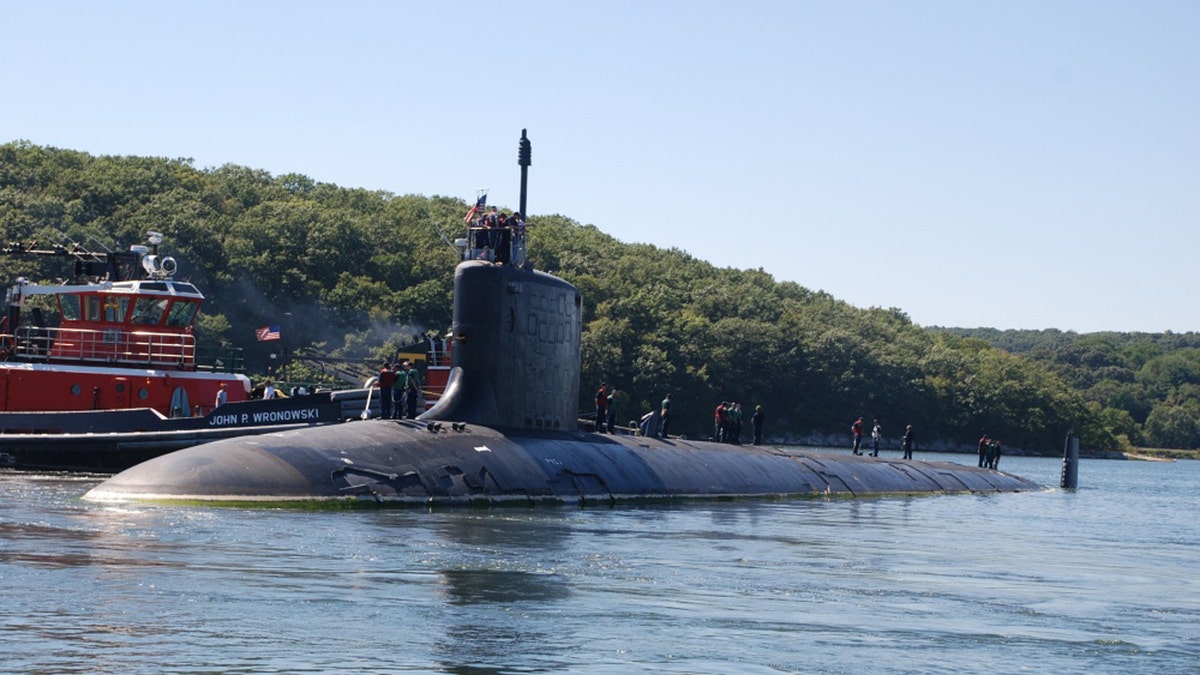Navy to add new attack submarines by 2045 in massive surge
The prospect of a rapid uptick in attack submarine production has been discussed for several years
{{#rendered}} {{/rendered}}New Virginia-class attack submarines are being built with a massive increase in firepower, much more sensitive and with powerful sonar detection and a new generation of computing, navigation, and command and control systems … and the Navy does not have enough of them.
It is a challenge that the Navy’s recently released 30-year shipbuilding plan seeks to correct, by calling for an increase in submarine production and acquisition in coming years to address emerging threats, meet growing requests from Combatant Commanders and greatly expand the mission scope for attack submarines to include more reconnaissance and clandestine undersea patrols.
The prospect of a rapid uptick in attack submarine production has been discussed and advocated now for several years by both members of Congress and senior U.S. Navy leaders who have for quite some time voiced concerns about the size and reach of the service’s submarine fleet in coming years.
{{#rendered}} {{/rendered}}As more Los Angeles class submarines, which have functioned well for decades, retire, there will be a fast-evolving and pressing need for larger numbers of submarines to replace them and also advance the technical curve by engineering a new generation of attack submarine capability.
NAVY ELECTRONIC WARFARE STOPS MULTIPLE ENEMY MISSILE ATTACKS AT ONCE
"Analysis is ongoing to reach the goal of more consistently procuring three SSNs [nuclear submarines] per year," the plan says. In total, the Shipbuilding plan states that the Navy hopes to operate as many as 72 attack submarines, up from 54, by 2045.
{{#rendered}} {{/rendered}}
The attack submarine USS Virginia departs Naval Submarine Base New London en route to Portsmouth Naval Shipyard in Kittery, Maine in 2010 - file photo. (U.S. Navy photo/Petty Officer 1st Class Steven Myers)
The plan cites what it calls an "adjustment'' in funding for a large 12-ship multiyear buy of the emerging Block VI Virginia-class attack boats. This is extremely significant in a number of key respects as the emerging Block VI boats, underway with conceptual development and prototyping, will incorporate new attack submarine technologies designed to improve performance and expand mission scope.
Congress and the Navy seem quite committed to the adjustment to build three per year starting in 2025 and 2026, as evidenced by the Shipbuilding plan’s addition of $1.7B to support "shipyard facilitation." The move likely reflects ongoing assessments and industrial base studies which have for several years now found that the U.S. industrial capacity does indeed possess the ability to successfully "flex" to accommodate a larger buy.
The Navy’s Shipbuilding plan emphasizes that industrial base assessments regarding how to sustain an increased production rate of Virginia-class submarines continue.
{{#rendered}} {{/rendered}}NAVY 'MOVES-OUT' ON OPERATING 11 AIRCRAFT CARRIERS
"We are in the process of assessing the industrial base capability to continue delivering three SSNs per year past FY26 during Columbia serial production. The post-FYDP [Future Years Defense Program] SSN profile will continue to be reviewed and updated in subsequent plans as the industrial base assessments are refined with the goal of three SSNs per year, if affordable and supportable by the industrial base," the Navy Shipbuilding plan writes.
Part of the growing need for attack submarines is inspired by technological breakthroughs in recent years wherein new "quieting" systems are now more able to improve stealthy undersea maneuvering potential. Some of these applications, which began several years ago with the Navy’s USS South Dakota Block III Virginia-class attack submarine, including new antennas, coating materials and engine propulsion quieting technologies, Navy developers have explained over the years.
{{#rendered}} {{/rendered}}CLICK HERE TO GET THE FOX NEWS APP
These kinds of breakthroughs impact the tactical equation by improving the attack submarines’ ability to command and control small fleets of undersea drones and conduct clandestine undersea reconnaissance patrols in high-risk, littoral coastal areas less accessible to large, deep draft surface ships. There are significant tactical implications regarding firepower as well, given that as many as nine or more of the upcoming Virginias will be built with what’s called Virginia Payload Modules, an extra 80-foot section added to the boats to massively increase firepower capability from 12 Tomahawks up to 40. This, of course, gives the boats an ability to conduct major land attacks potentially in closer proximity than larger surface ships.
-- Kris Osborn is the Managing Editor of Warrior Maven and Defense Editor of The National Interest .
